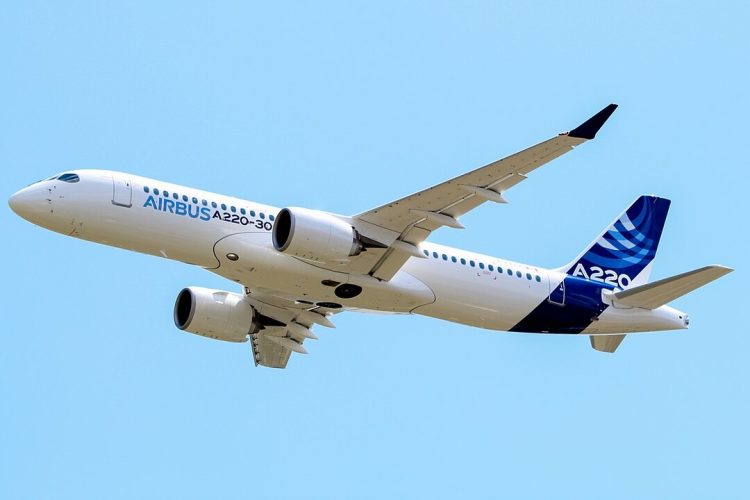Navigating the Skies: Decoding the Layover Flight Experience

Air travel has become an integral part of our globalized world, connecting people and cultures across vast distances. For many, the prospect of a layover flight is both a common occurrence and a source of curiosity. What exactly does it mean to have a layover during a flight? In this article, we will unravel the mysteries behind layover flights, exploring their meaning, reasons, and the experiences they offer to travelers.
Understanding Layover Flights:
A layover, in the context of air travel, refers to a stopover at an intermediate airport on the way to the final destination. Unlike a direct flight, where passengers board a single aircraft that takes them directly to their endpoint, a layover involves changing planes during the journey. This break in the journey can range from a brief stop of a few hours to an extended layover spanning several days.
Reasons for Layovers:
Various factors contribute to the necessity of layovers in flight itineraries. One primary reason is the optimization of airline routes for efficiency and cost-effectiveness. Airlines often design their schedules to connect multiple destinations using hub airports, where passengers can transfer between different flights. This allows airlines to consolidate their operations and offer a broader range of destinations.
Another common reason for layovers is the lack of direct flights between certain city pairs. For example, if a traveler is flying from a smaller city to an international destination, they might need to change planes at a major hub before continuing to their final stop. This lack of direct connectivity can be attributed to market demand, airline partnerships, or logistical constraints.
Extended layovers, sometimes known as stopovers, can be intentionally added by travelers to explore an additional destination on their journey. Airlines and travel agencies often promote stopover programs, encouraging passengers to take advantage of these extended breaks to discover new cities or countries at minimal additional cost.
Types of Layovers:
Layovers come in various forms, each offering a different experience for travelers:
- Short Layovers:
- Brief stops ranging from a few minutes to a few hours.
- Passengers remain within the airport terminal, minimizing exploration opportunities.
- Mainly for connecting flights or refueling purposes.
-
Long Layovers:
- Extended stops of several hours to a day.
- Passengers may have the option to leave the airport and explore the layover city.
- Commonly utilized for connecting to flights with less frequent schedules.
-
Overnight Layovers:
- Layovers that extend overnight.
- Passengers often book accommodation for the night and explore the layover city more extensively.
-
Multiple Layovers:
- Itineraries involving more than one layover, with passengers changing planes multiple times.
- Can result from complex flight schedules or the lack of direct connections between specific cities.
Experiencing a Layover:
The experience of a layover can vary significantly based on the duration, airport facilities, and personal preferences. Short layovers may involve a quick dash between gates, while longer layovers provide opportunities for exploration. Here are some aspects to consider when navigating layovers:
-
Airport Amenities:
- The quality of the layover experience often depends on the amenities offered by the connecting airport.
- Some airports boast world-class facilities, including shopping, dining, lounges, and entertainment options.
- Travelers can take advantage of duty-free shopping, sample local cuisine, or simply relax in airport lounges.
-
Exploring the Layover City:
- Longer layovers, especially those extending overnight, offer the chance to explore the layover city.
- Travelers can visit local attractions, try regional cuisine, and immerse themselves in the culture of the temporary stopover location.
-
Airport Lounges:
- Passengers with access to airport lounges can enjoy a more comfortable and secluded environment.
- Lounges often provide amenities such as Wi-Fi, showers, and complimentary food and beverages.
-
Time Management:
- Efficient time management is crucial during layovers, especially short ones.
- Passengers should factor in the time required for security checks, immigration, and the distance between gates.
Conclusion:
In the realm of air travel, layovers are a multifaceted aspect that can enhance or challenge the overall journey. Whether it’s a brief connection or an intentional stopover, layovers offer travelers unique opportunities to experience different airports and cultures. Navigating the skies with layover flights is not just a practical aspect of travel but an adventure waiting to unfold at every stop along the way.
What is a layover flight?
A layover flight refers to a stop at an intermediate airport during a journey, where passengers may need to change planes before reaching their final destination. It can vary in duration, from short layovers lasting a few minutes to longer layovers spanning several hours or even days.
2. How is a layover different from a direct flight?
In a direct flight, passengers stay on the same aircraft from departure to arrival, with no intermediate stops. In contrast, a layover flight involves changing planes at an intermediate airport before continuing to the final destination.
3. Why do layovers occur in flight itineraries?
Layovers are often a result of airline route optimization for efficiency and cost-effectiveness. They can also occur due to the lack of direct flights between specific city pairs, prompting the need for passengers to transfer at a hub airport.
4. Are layovers only for connecting flights?
While layovers are common in connecting flights, they can also be intentional, allowing passengers to explore an additional destination during an extended break in their journey. These intentional layovers are sometimes referred to as stopovers.
5. What are the different types of layovers?
Layovers can be short, long, overnight, or involve multiple stops. Short layovers typically last a few minutes to a few hours, while long layovers can extend for a day. Overnight layovers provide the opportunity for passengers to book accommodation and explore the layover city.
6. Can passengers leave the airport during a layover?
The ability to leave the airport during a layover depends on the duration and airport regulations. Longer layovers, especially those extending overnight, often allow passengers to explore the layover city. However, passengers must consider immigration requirements and return to the airport well in advance of their connecting flight.
7. How can travelers make the most of a layover?
Travelers can make the most of a layover by researching the amenities offered at the connecting airport, exploring the layover city if time permits, and taking advantage of airport lounges. Planning ahead and managing time efficiently can contribute to a more enjoyable layover experience.
8. Are layovers included intentionally in some travel itineraries?
Yes, intentional layovers, also known as stopovers, are sometimes included in travel itineraries to allow passengers to explore an additional destination. Airlines and travel agencies may promote stopover programs, encouraging travelers to take advantage of these extended breaks.
9. What amenities are available during a layover at airports?
Airports vary in terms of amenities, but common offerings during layovers include shopping, dining, lounges, and entertainment options. Passengers can enjoy duty-free shopping, sample local cuisine, or relax in airport lounges with complimentary services.
10. Are layovers time-consuming, and how can travelers manage their time effectively?
The time spent during a layover can vary. Short layovers require efficient time management, considering factors such as security checks and the distance between gates. Travelers should plan ahead, be aware of airport layouts, and allocate sufficient time for essential processes during layovers.





